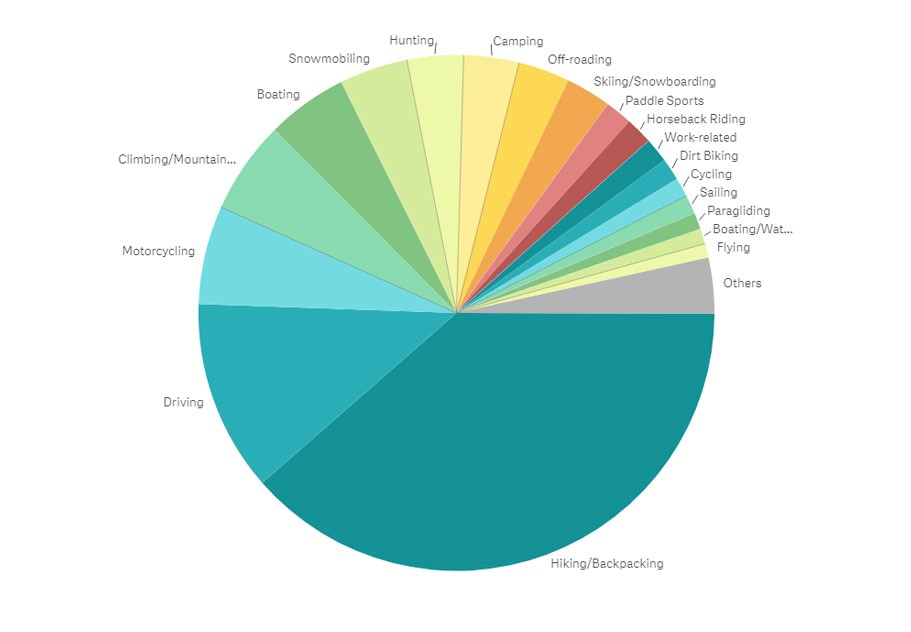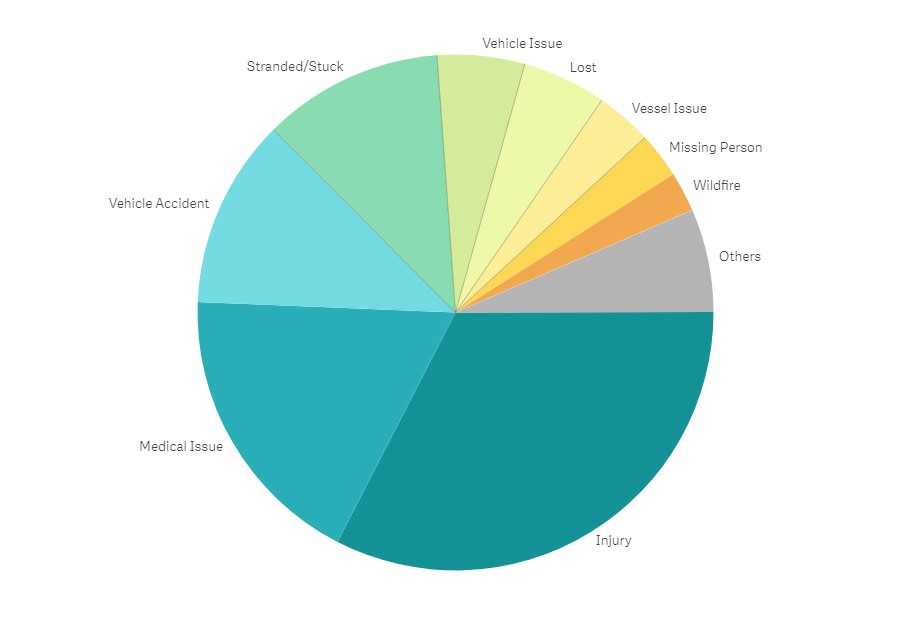As the saying goes, “Location, Location, Location!”. Accurate location information and the ability to communicate that location to others is a foremost consideration during backcountry travel and organized search and rescue (SAR) responses. During personal recreation, the ability to determine your precise location is crucial to successful navigation and preventing the need for rescue. However, once a rescue is needed, communicating an accurate location to rescuers can save hours if not days in response time.
Increasingly, outdoor recreationalist have turned to carrying satellite communication devices to address these needs. The exact features vary by device, but many now offer a combination of GPS functionality, location sharing, two-way messaging, and SOS activation. Crucially, they function on satellite networks allowing them to operate in areas without cellphone service. While these devices still have drawbacks such as accidental SOS activations and activations for non-emergencies, they do effectively achieve their core mission of communicating location information.
Garmin, which manufactures several of the most popular devices, recently published data from 10,000 SOS incidents over eleven years revealing both expected and unexpected findings. While all seven continents have seen SOS incidents, there is a definite increase in concentration in mountainous areas such as the Western portion of the US and Canada, Alaska, the European Alps, the Andes, and New Zealand. It is not clear if this is a result of the general increase in outdoor recreation or if the existence of the devices themselves encourages the inexperienced to go places they otherwise wouldn’t.

Types of activities associated with SOS activation.
Predictably, most SOS incidents occur during participation in traditional outdoor pursuits with hiking and backpacking accounting for 39% of all incidents. Climbing and mountaineering are the next highest for outdoor pursuits. This reinforces data from prior studies showing that a majority of incidents occur during hiking. Interestingly, driving and motorcycling represent close to 20% of all incidents.

Primary reasons for SOS activation.
Approximately 47% of incidents were due to injury or illness. Injuries alone accounted for a full 30% of all incidents. A much smaller portion, although not insignificant, of incidents occurred due to persons being lost, stranded, or stuck. It is unclear how much overlap there may have been between categories (i.e., persons who were both lost and injured). This runs counter to previous data showing a majority of SAR team response was for non-injury/illness. The devices themselves may be an explanation for this discrepancy because of the demographics of their users. The devices used in this data set included GPS functionality and likely assisted users with navigation thereby driving down the number of activations simply for being lost. Multiple other studies also show a larger portion of responses for non-injury/illness, including those from Utah, New York, and New Hampshire. The data from these studies occurred several years before the significant recent increase in satellite communication devices preponderance and would not have captured significant use of these devices. Further study is needed to fully assess the impact widespread use has had on SAR response trends.
Many users likely purchase and carry these devices with rescue for themselves as their main motivation. However, the Garmin data also shows approximately equal likelihood of activation by a party member or a third-party. When traveling in a group, it is important for all members to discuss what emergency equipment is being carried and how to use it. The ability for all party members to affect a rescue is vital to safe and successful recreation.
Satellite communication devices have a role in the emergency kit of outdoor recreationalist and professionals. However, they are not a substitute for experience and sound judgment. It is important that these devices be used how they are intended, as emergency equipment. Best practices of outdoor travel remain unchanged:
- Carry the Ten Essentials
- Leave a responsible third-party a detailed plan of the itinerary and have established check-in times
- Create a plan for notifying local authorities if the party is overdue